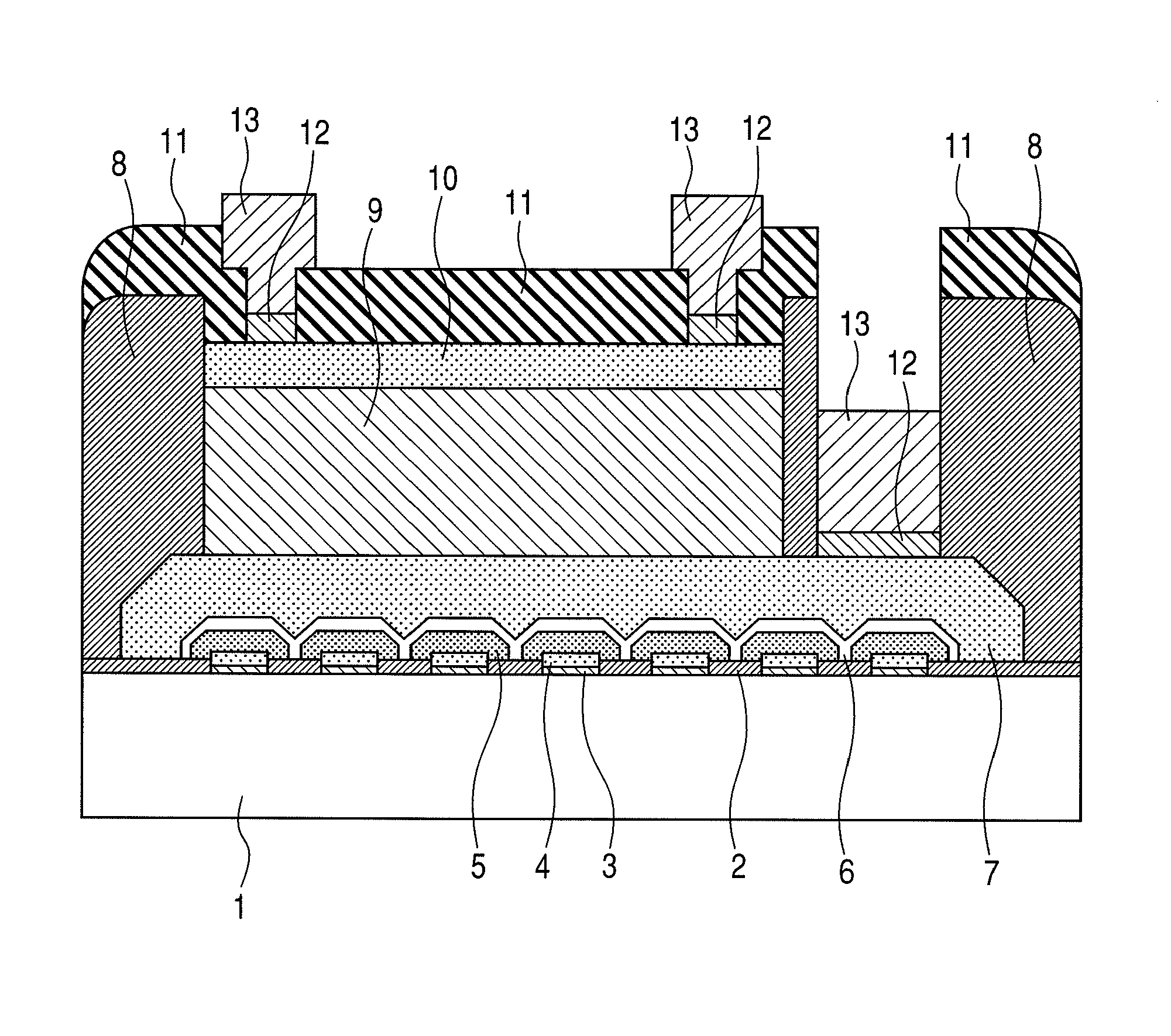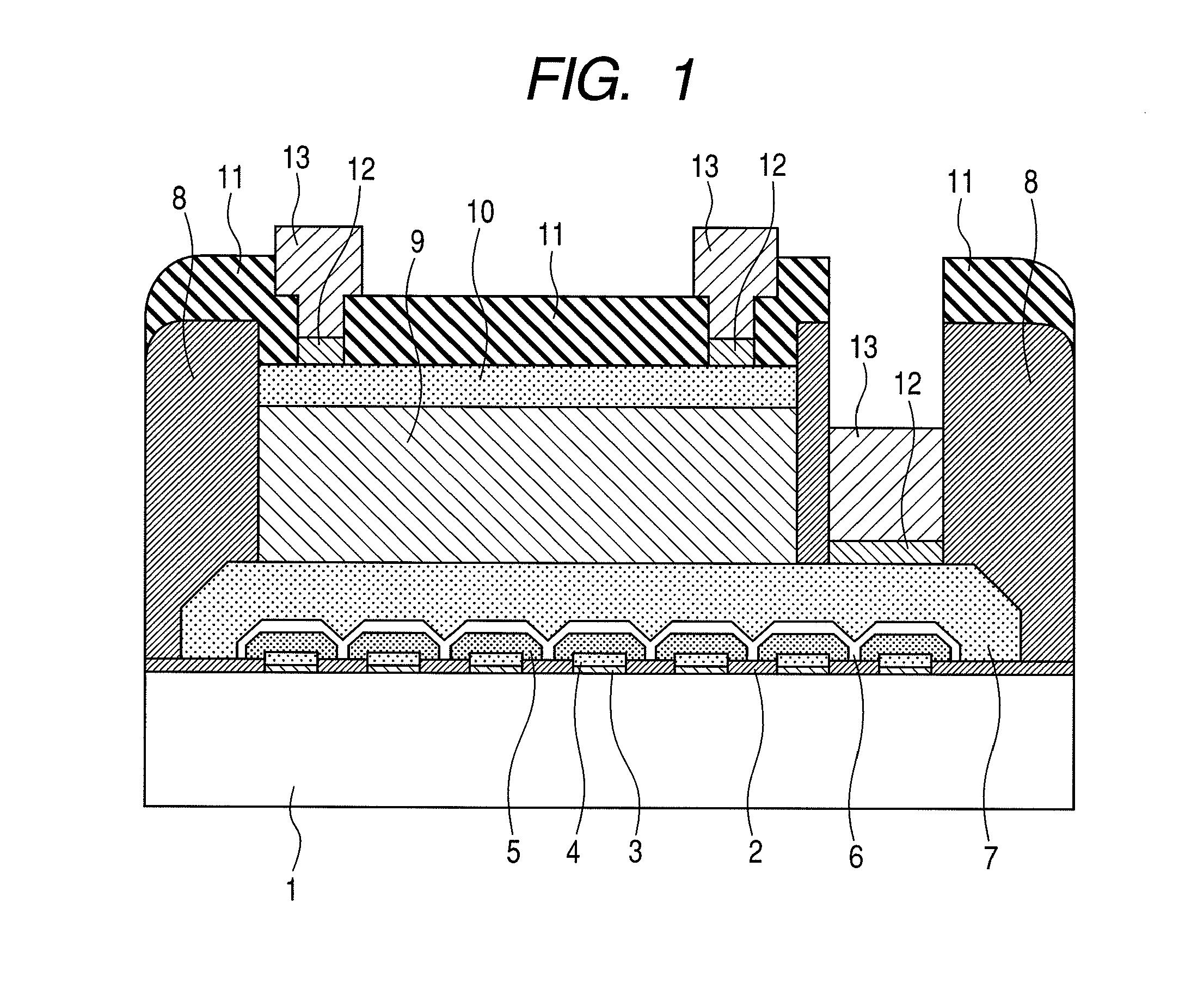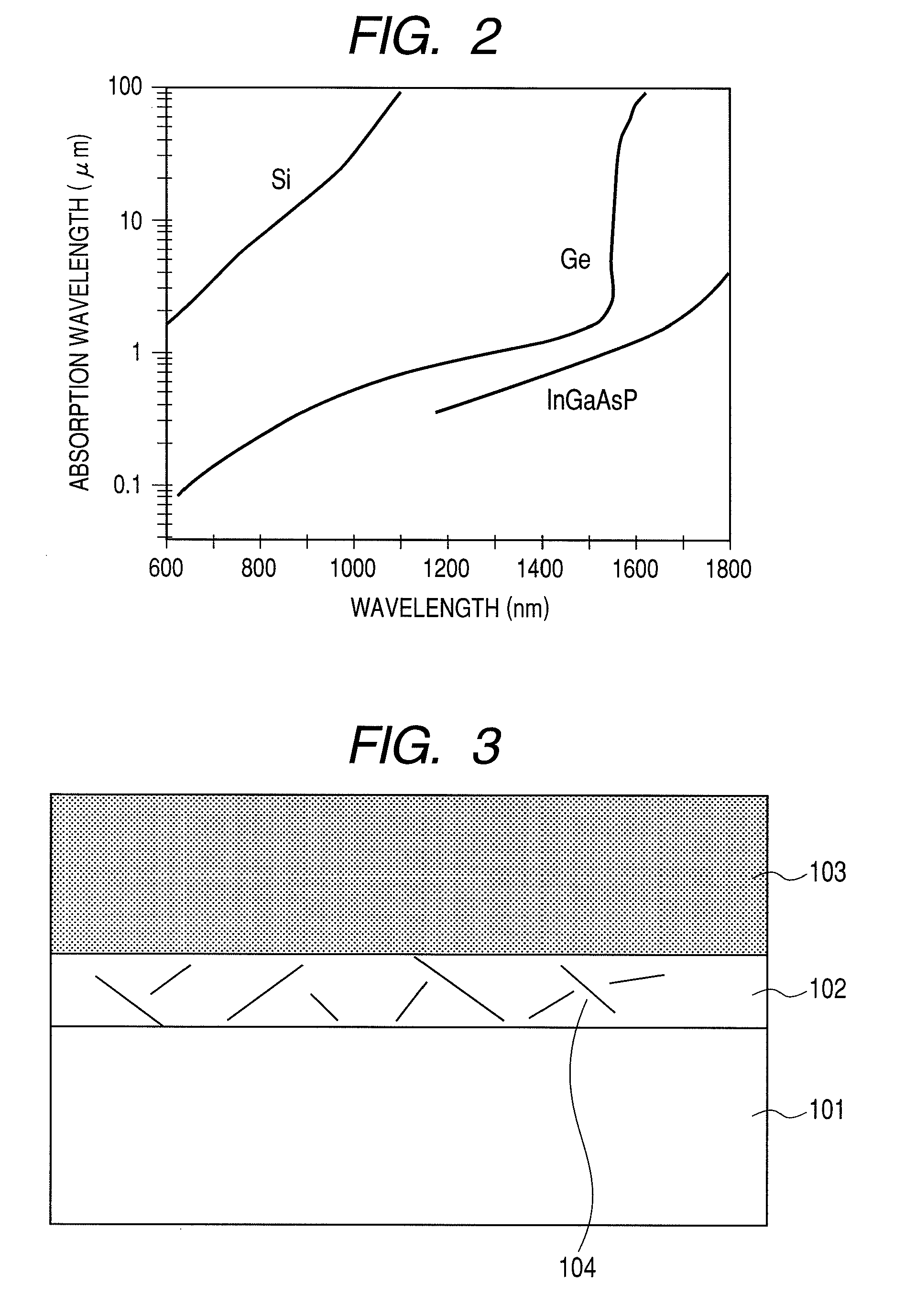Semiconductor photodiode device and manufacturing method thereof
a technology of semiconductors and diodes, applied in semiconductor devices, solid-state devices, radiation controlled devices, etc., can solve the problems of poor absorption, scarce light absorption, high technical barriers, etc., and achieve the effect of reducing dark current and good crystallinity
- Summary
- Abstract
- Description
- Claims
- Application Information
AI Technical Summary
Benefits of technology
Problems solved by technology
Method used
Image
Examples
first embodiment
[0091]In this embodiment, a low defect density Ge photodiode device formed above a silicon substrate with Ge island using a low temperature germanium buffer layer being as a nuclei, as well as a manufacturing method thereof.
[0092]FIG. 1 is a cross sectional structural view showing a first embodiment of a semiconductor photodiode device according to the invention. This cross sectional structure shows a structure of a photodiode portion in a bipolar phototransistor having a photodiode portion and an amplification portion separately.
[0093]Reference numeral 1 in FIG. 1 denotes a silicon (Si) substrate. Above the Si substrate 1, a patterned insulating film 2, a Ge buffer layer 3 grown at a low temperature and a Ge layer 4 are formed by selective epitaxial growing in an opening window opened in the insulating film 2. On the Ge layer 4, a Ge layer 5 is grown in the perpendicular direction and the horizontal direction to the substrate by epitaxial lateral growth so as to cover the Ge layer ...
second embodiment
[0114]FIG. 14A and FIG. 14B are surface views showing a second embodiment of a semiconductor photodiode device according to the invention. FIG. 14A shows the surface after applying patterning for forming Ge islands above an Si substrate 1. FIG. 14A shows a characteristic feature that a repetitive pattern period of the Ge windows is off-set by one-half period. FIG. 14B shows a surface view in which a low temperature grown Ge layer 6 substantially buries Ge islands in the pattern shown in FIG. 14A. It can be seen that the area of the spacing remaining in the step where adjacent Ge islands coalesce to each other is decreased compared with that in the case of the first embodiment (FIG. 11B). Therefore, the thickness of the low temperature grown Ge layer 6 necessary for burying the spacing can be decreased. Since the defects incorporated in the film is decreased more as the thickness of the low temperature grown Ge layer 6 is decreased further the defect density can be decreased further ...
third embodiment
[0115]FIG. 15A and FIG. 15B are surface views showing a third embodiment of a semiconductor photodiode device according to the invention. FIG. 15A shows a surface after applying patterning for forming a Ge island above an Si substrate 1. The embodiment of FIG. 15A shows a characteristic feature that the Ge window has a rectangular shape having a length equal with the diameter of the window. According to this embodiment, the remaining spacing is eliminated at the instance adjacent Ge islands coalesce to each other (FIG. 15B). Accordingly, the thickness of the low temperature grown Ge layer 6 necessary for burying the spacing can be minimized, thereby enabling to decrease the crystal defect density in the low temperature grown Ge layer 6. However, if the diameter of the window is excessively long, the volume of the Ge buffer layer 3 and the Ge layer 4 formed in the window is increased making it difficult to sufficiently decrease the defects by the heat treatment after growing. Therefo...
PUM
 Login to View More
Login to View More Abstract
Description
Claims
Application Information
 Login to View More
Login to View More - R&D
- Intellectual Property
- Life Sciences
- Materials
- Tech Scout
- Unparalleled Data Quality
- Higher Quality Content
- 60% Fewer Hallucinations
Browse by: Latest US Patents, China's latest patents, Technical Efficacy Thesaurus, Application Domain, Technology Topic, Popular Technical Reports.
© 2025 PatSnap. All rights reserved.Legal|Privacy policy|Modern Slavery Act Transparency Statement|Sitemap|About US| Contact US: help@patsnap.com



